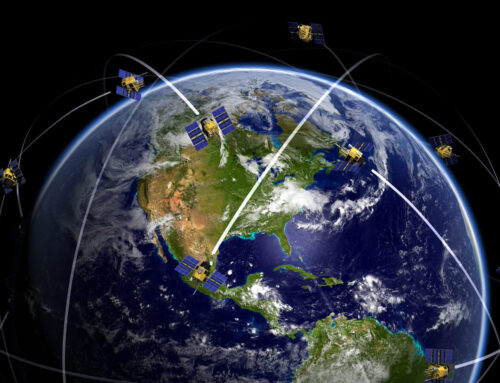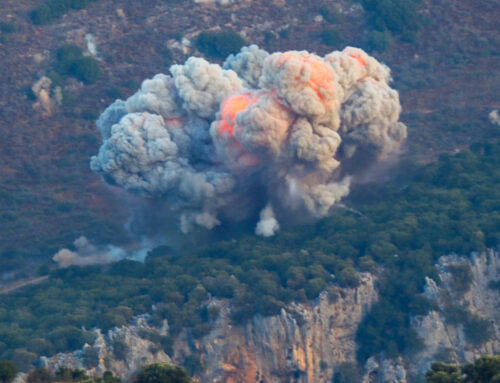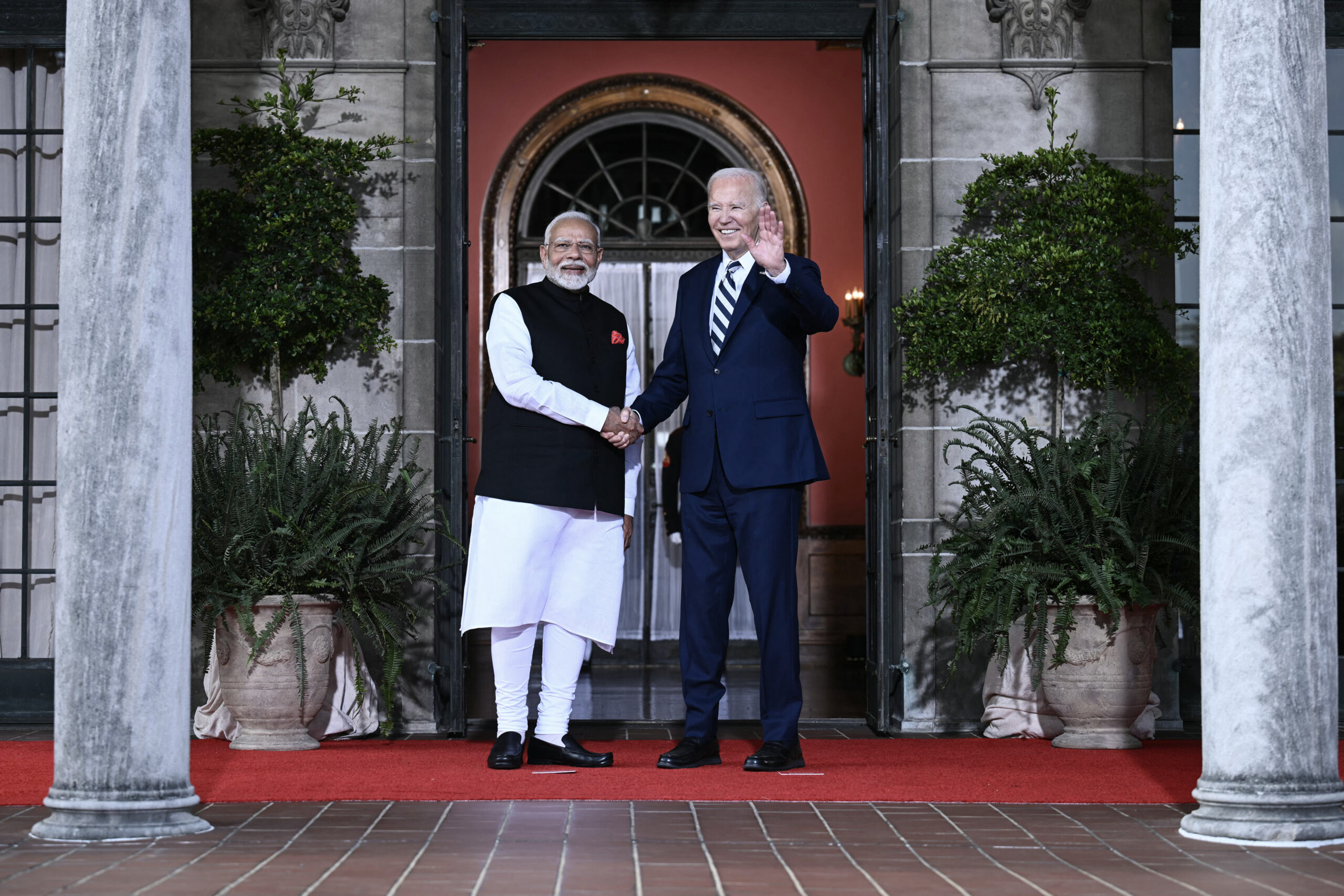From left, US Space Force Brig. Gen. Dennis Bythewood, Joint Task Force-Space Defense commander, Joe Gerber, JTF-SD Commercial Operations Cell (JCO) lead integrator, and Barbara Golf, Space Systems Command strategic advisor for Space Domain Awareness (SDA), host UK Royal Air Force Air Commodore Adam Bone, UK Space Command director of operations, plans, and training, at the JCO facility in Colorado Springs, Colorado, Feb. 24, 2023. (US Space Force photo by Dennis Rogers)
MAUI — US Space Command is adding new mission sets to the remit of the multinational Joint Commercial Operations (JCO) cell, originally created to improve space domain awareness via unclassified commercial data, according to JCO head Barbara Golf.
“The JCO [is] the space domain awareness cell that we have had in operations for several years now, augmenting military space surveillance,” she told the annual Advanced Maui Optical and Space Surveillance Technologies (AMOS) conference. “We originally focused on protect and defend, feeding into the National Space Defense Center, but we have moved well beyond that.”
The National Space Defense Center is SPACECOM’s organization at Schriever Space Force Base in Colorado that brings together military and Intelligence Community (IC) operators, particularly those working with US spy satellites owned by the National Reconnaissance Office (NRO) to determine how best to prevent adversary attacks on Defense Department space systems.
The JCO is a new name as of last December for the Joint Task Force-Space Defense Commercial Operations created by SPACECOM in 2020. It now involves 14 countries plus NATO, and gets commercial data and analytical products via the Unified Data Library, Golf explained using a slide presentation.
“There’s a variety of different sensor types from our commercial providers — electro-optical sensors, radars, passive RF [radio frequency] publicly available information, and we are moving into satellite-to-satellite information as well,” she said.
Golf elaborated that the JCO’s mission up to now has been providing warnings about worrisome space activities by adversaries from low Earth orbit (LEO) to geosynchronous orbit (GEO) and beyond to far flung orbits often called xGEO.
“We are very good in GEO, not so good in LEO [but] we’re fixing that, and moving out into xGEO, providing support and indications of warning. We do things like maneuver detection, launch tracking and our report, out primary deliverable, is called the NOTSO, Notice To Space Operators, very similar to a NOTAM notice to Airmen and mariners,” she said.
“We do say: ‘if you drive it and drive it like you stole it, you have our full and undivided attention,” Golf added.
Golf, who also serves as the strategic advisor for space domain awareness at Space Force’s Space Systems Command, explained that the JCO now has “a mandate to integrate commercial into operations” and is adding missions to its portfolio. These include electromagnetic spectrum operations, which the JCO took up in July, and tactical surveillance, reconnaissance and tracking (Tac-SRT), which it will begin as of Oct. 1, she said.
Tac-SRT is the moniker created by Space Force leadership for what traditionally has been called tactical intelligence surveillance and reconnaissance in order to differentiate what the Pentagon sees as the service’s role versus those of the NRO and the National Geospatial-Intelligence Agency (NGA) as well as allied and partner nations.
NRO not only owns and operates spy satellites, but also is charged with buying remote sensing imagery from commercial satellite companies. NGA is responsible for collecting the remote sensing imagery provided by NRO, as well as imagery analysis from commercial providers, fusing all that into usable information, and disseminating it to the US national security community including military forces. The roles and missions delineation between the IC and the Space Force, including over acquisition of commercial imagery, is the subject of a ongoing, and sometimes heated, interagency debate.
The Space Force since February has been operating a Tac-SRT pilot program that uses unclassified commercial analytical products (rather than raw imagery) to help US Africa Command with support missions like disaster relief and most recently the US military withdrawal from Niger — something Chief of Space Operations Gen. Chance Saltzman touted in his Sept. 18 speech to the annual Air Force Association conference.
Golf stressed that the JCO’s Tac-SRT work will be coordinated with the IC, particularly NGA, which has its own commercial remote sensing data lake.
“We are actually collaborating with the IC. We don’t double buy. We check NGA imagery libraries first to make sure we don’t already have information. We take everything we purchase and put it back in those libraries,” she said.










